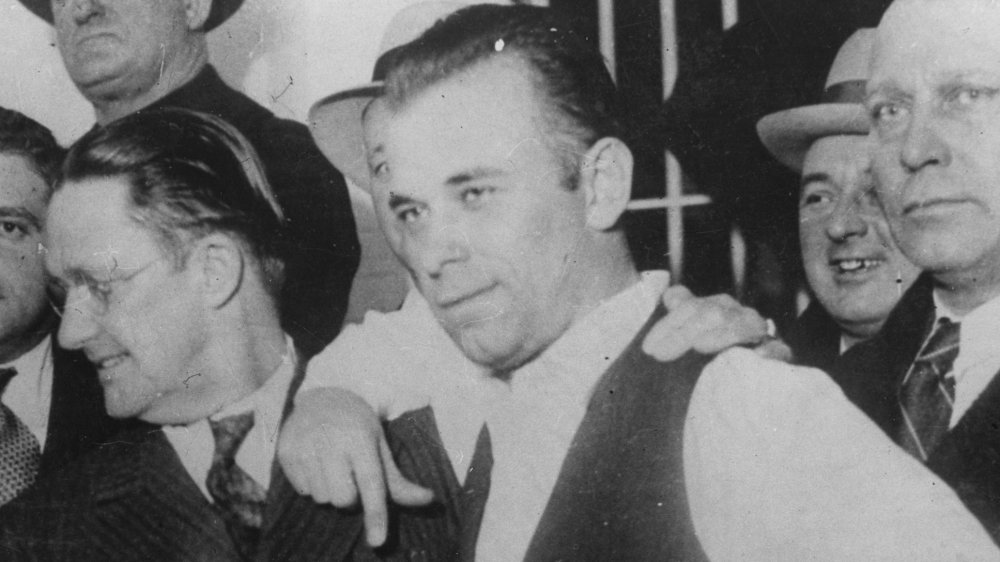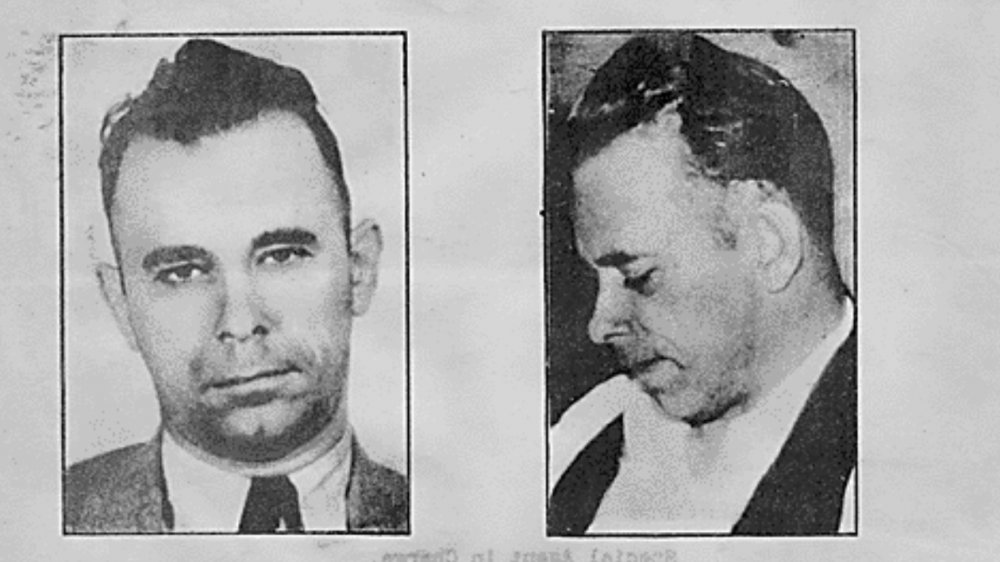How Much Money Did The Dillinger Gang Actually Steal?
Author Ronald Kessler lauds FBI Director J. Edgar Hoover's decision to declare John Dillinger "Public Enemy Number One" as "a stroke of public relations genius." Back when Hoover made that famous pronouncement in 1934, though, much of the public might have begged to differ. The enemy of the public's enemy was its friend, and Public Enemy Number One was the bane of banks, at a time when people despised them. The Great Depression had toppled a lopsided economy that fostered enormous income inequality, and as the Guardian describes, banks that remained open foreclosed on debtors.
People who lost their homes and life savings, thanks to a financial catastrophe fueled by reckless lending, might have considered the banks to be robbers. Contempt turned into a desire to see vengeance, says PBS, and by the time the FBI branded Dillinger America's main enemy, for robbing banks, the jaded folks on Main Street had already elevated him to folk hero status. He was no hero, folks, but he arguably looked the part, with his mischievous eyes and a butt-chin you could bounce a quarter off. And, with help from his notorious gang, he stole a whole lot of quarters from banks.
From heartbreak to jailbreak
In a way, bank robbery was John Dilllinger's revenge against life. In 1924, he got slapped with a steep prison sentence, per PBS, after striking a grocer with an iron bolt wrapped in cloth, during a robbery. With no previous arrest record, Dillinger was condemned to spend 10 to 20 years behind bars, while his partner in crime — who had a rap sheet — received a far lighter punishment. In 1929, Dillinger's wife divorced him, crushing his hopes of coming home to her. He would later say, "I began to know how you feel when your heart is breaking."
Heartbreak was the only kind of break he could catch. After losing his sweetheart, a bitter Dillinger was denied parole, despite exhibiting excellent behavior for two years. Angry and alone, he asked to be transferred to a harsher penitentiary, where his friends were incarcerated. There, he made a new friend, Herman Lamm, a former German army officer with a mind for bank robbery.
In 1933, Dillinger received parole, and orchestrated a prison break. Ten inmates escaped, five of whom formed the Dillinger Gang. A sixth member joined later. Meanwhile, Dillinger got arrested, so the gang staged a second jailbreak for him. After robbing police stations of weapons, the Dillinger Gang robbed banks, using lessons learned from Herman Lamm. In total, they stole over $300,000, according to the Crime Museum. Crime Wave Magazine places the figure at $500,000.

